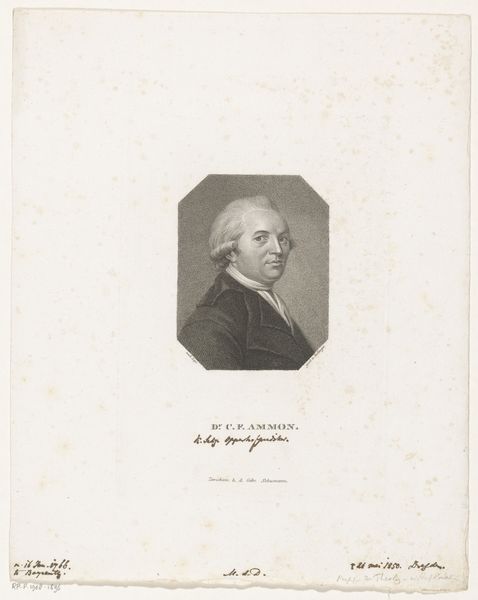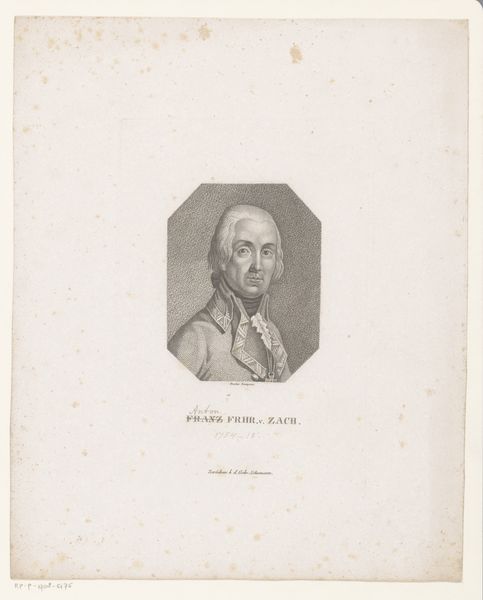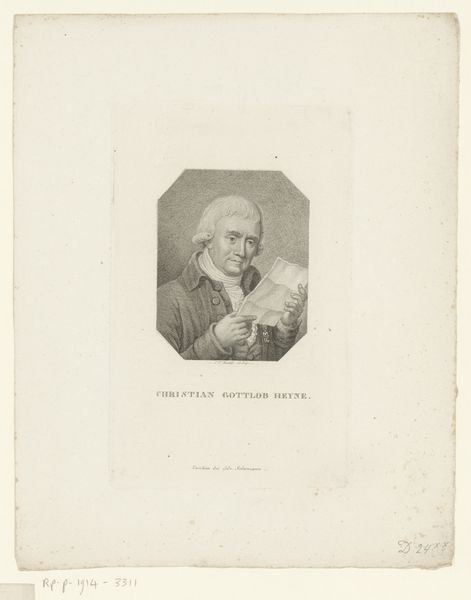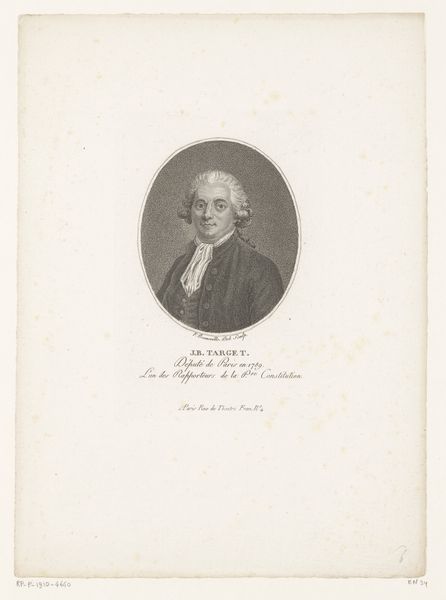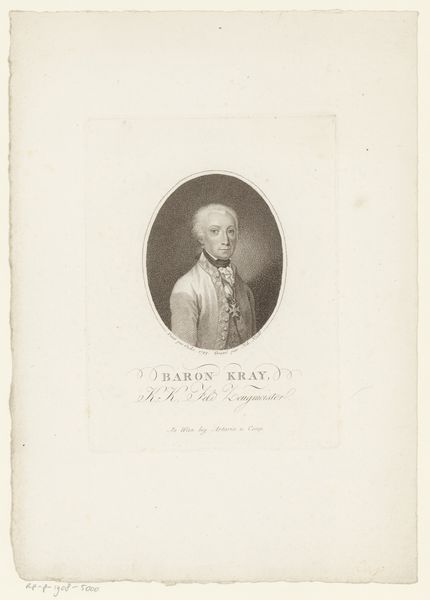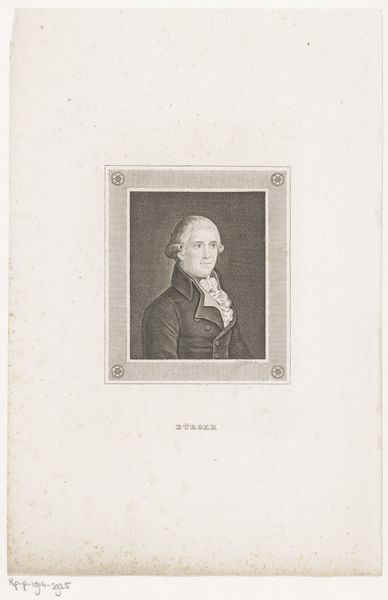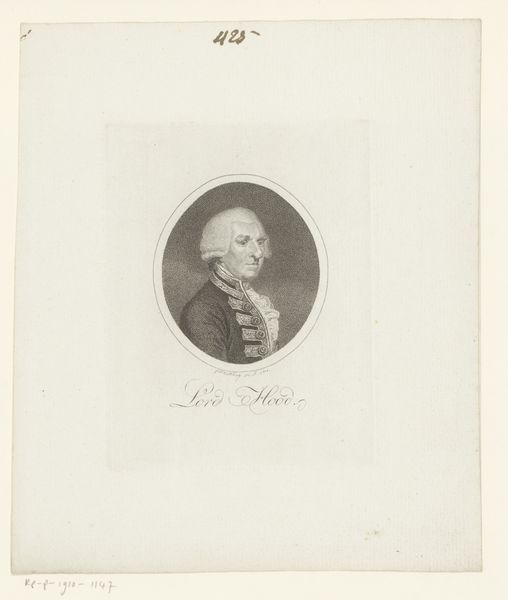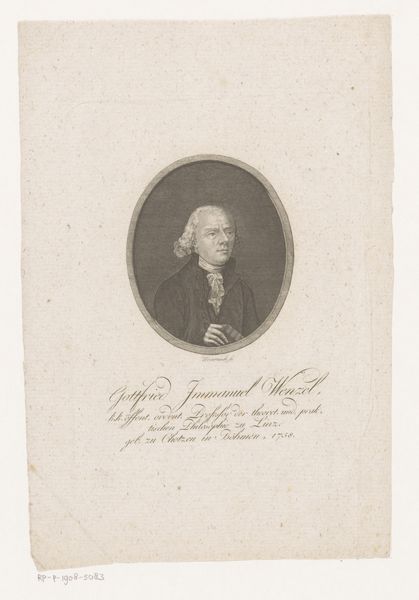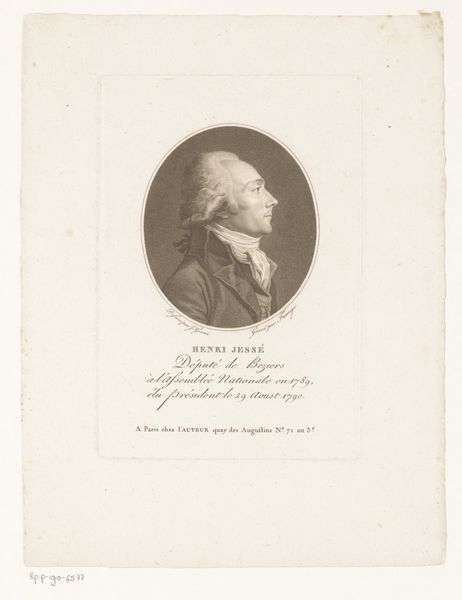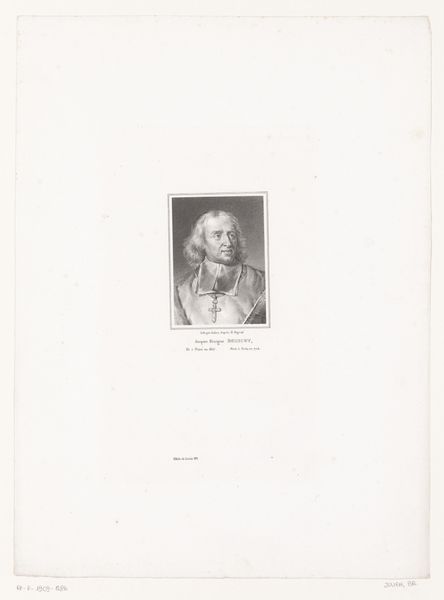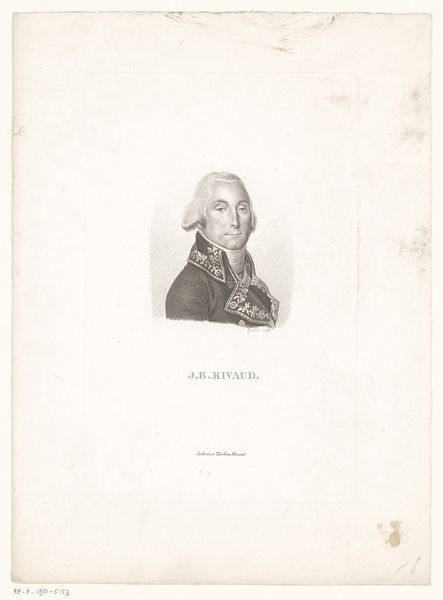
Dimensions: height 162 mm, width 119 mm
Copyright: Rijks Museum: Open Domain
Editor: Here we have an 18th-century print titled "Portret van Jean-Baptiste Jourdan". It's an engraving by Henri Forgeur. It's quite a formal portrait, almost austere. What do you see in this piece, especially regarding its place in society and history? Curator: What strikes me is the way this portrait participates in the construction of celebrity in the late 18th century. Think about it: who was Jean-Baptiste Jourdan, and why was it important to circulate his image? The rise of the military hero as a figure of popular fascination is directly tied to the political upheaval of the era. Editor: So, you're saying that this isn't just a likeness, but a carefully constructed image for public consumption? Curator: Precisely. The clean lines, the emphasis on reason and order-- it all speaks to the values of the neoclassical movement but also the desire to legitimize and propagate the image of leadership in a time of social change. How do you see the lines and their significance, beyond pure visual style? Editor: They feel deliberate, almost like they're meant to project strength. But doesn't that also risk making the portrait seem cold or detached? Curator: That's an excellent point. The perceived 'coldness' may actually be intentional. Reflect on what characteristics the rising middle class valued in their leaders: Reason? Objectivity? Control? Portraits like this perform a critical function of visualizing those ideals, thus shaping and reinforcing cultural values. Editor: That makes a lot of sense. I hadn’t considered how a portrait could be such an active participant in shaping social norms. Curator: Exactly! The public role of art is immense, influencing the politics of imagery and who gets remembered. The way history painting and portraits are done also influence viewers like us. Editor: I see it differently now; it's not just a portrait, it is a political statement, an icon in the making. Curator: Absolutely, and understanding that is crucial to appreciating its historical and cultural significance.
Comments
No comments
Be the first to comment and join the conversation on the ultimate creative platform.
